Time to be able to work on my jewels
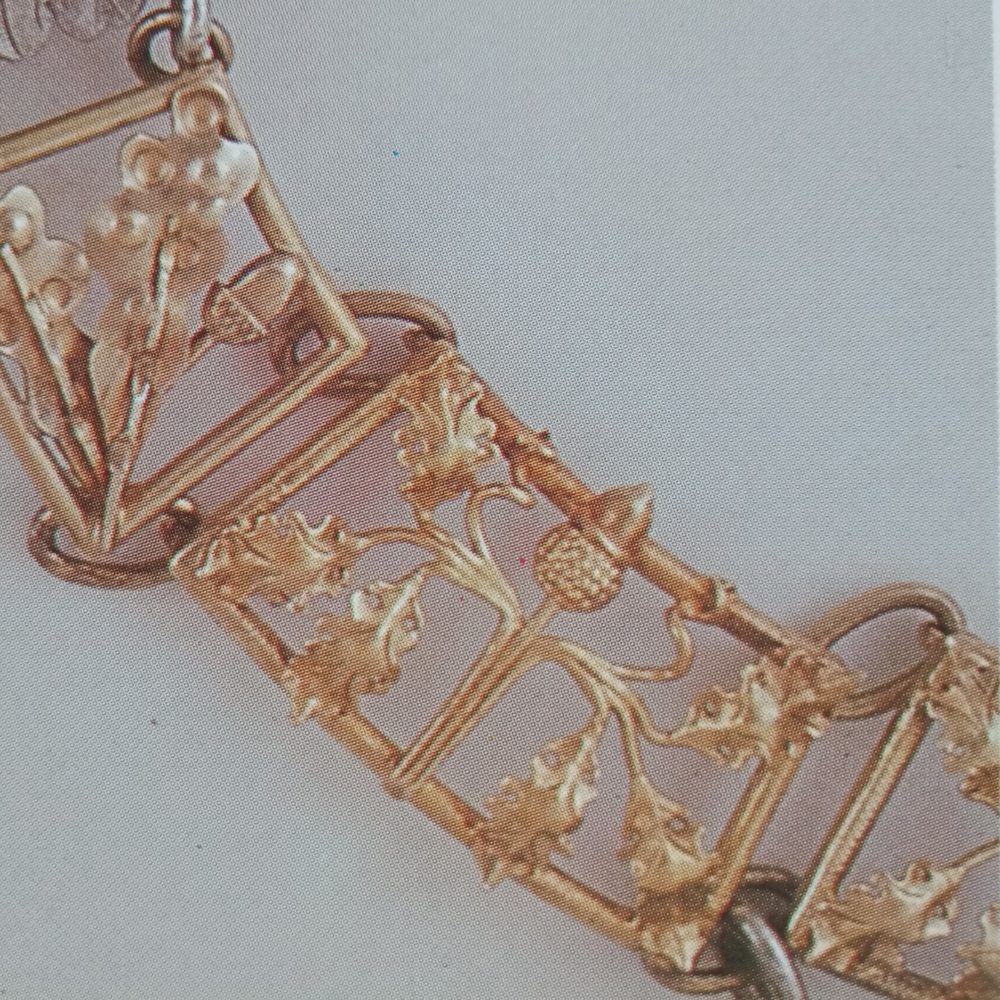
This frame has corners and loops for links welded in, and I’m bending the corners and hoping to use the pressure of the leaves to keep links in place but let’s hope!

This frame has corners and loops for links welded in, and I’m bending the corners and hoping to use the pressure of the leaves to keep links in place but let’s hope!
I think I managed to fix my site and tidied my abstract for the call for papers by The Association of Dress Historians. It’s a bit hard to condense why my paper is novel and why when the single largest source for North Rhine Dress has been created by me. But now I am able to take a break for the day and work on my heavily pearled hat all this work is about, and work on the jewels including my Sweet Boo as the central element. He looks a lot like a very round version of this heraldic cat/lioness?
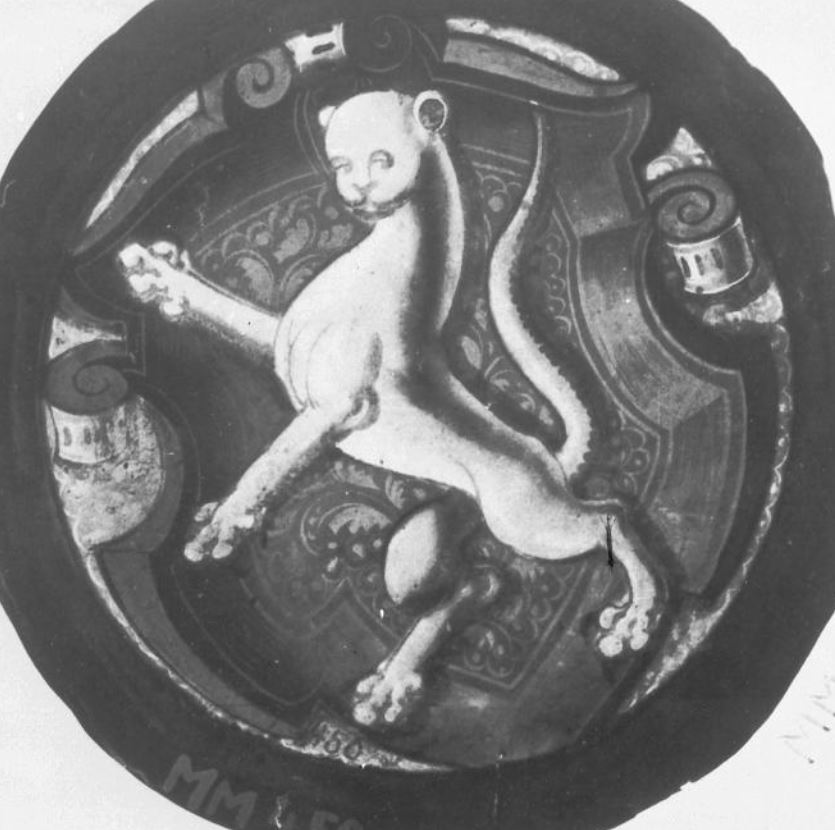
quick test,2,3,4,5,6,7,8,9,10,11
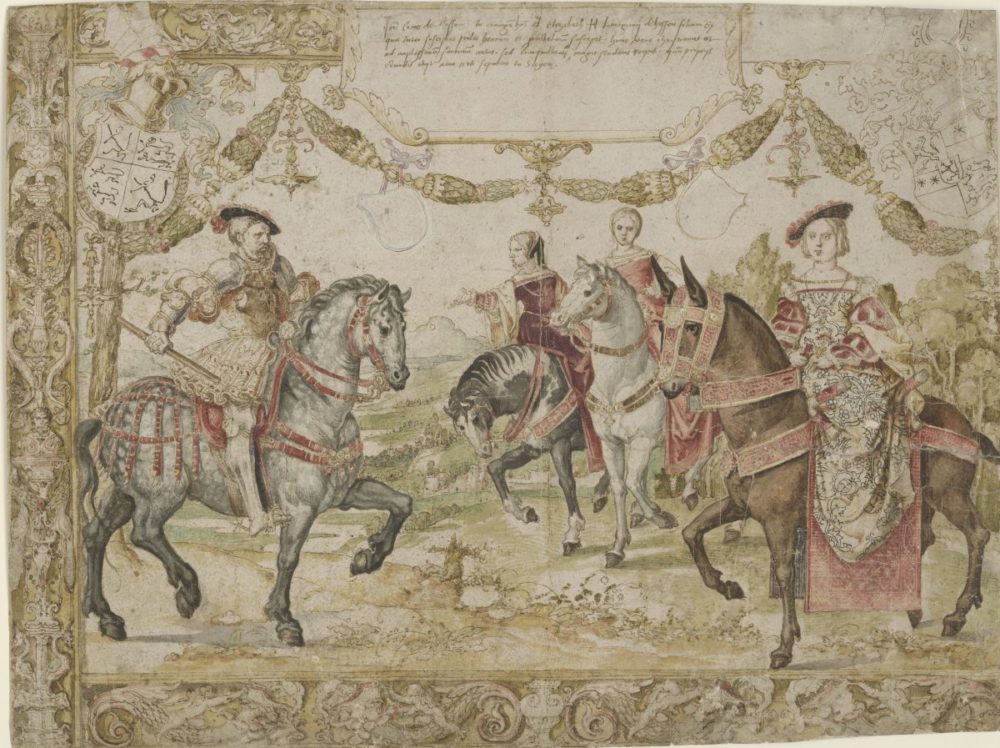
It turns out I have already written a decent draft of my paper. I got a bit carried away which is why I got myself in a mess when I was writing it. I tried to answer outside the question I initially ask. But it’s also very nice to have the follow up ready for any Q&A I might be asked *if* the paper is accepted at all.
But it’s also summer and so my days are actually pretty tough as my best therapy for pain and fatigue is heat. This is different though, it’s stifling.
Why yes, editing down information is difficult. But I’m pretty happy with what I have and can sync across devices and the cloud. After writing on my flip book in hospital I’ve got some serious disconnects with copies of copies. It was particularly hard separating the tapestries folders. But when you have such high quality images of really incredibly preserved tapestries? It’s fine to limit them for a paper.

I plan on making a time line of images for these anyway, so I haven’t got rid of them, just moved them for that future project. I love these though. So much. The examples I’m using still need to be organised by date. And some have been separated, many copies are around too.
I wish the cartoons of these sets were still around. The figure to the left appears several times sometimes reversed, and different details. The cartoons I mean are the life sized ones that were used during the weaving process.
My Anne of Cleves research keeps coming back to weird coincidences, well not if you already know the history of the time and place. About 1/4 of my family lived in Gelderland and there was a lot of influence between the duchies and one of the nifty smaller cartoons we have of the Nassau set comes back to that.

Mencía de Mendoza married Henry III, Count of Nassau (1483-1538), stadtholder of Holland, Zeeland, Utrecht and Gelderland…
Under Mencía’s leadership, the Breda court developed into a center of science. She maintained contacts with prominent scholars and a large number of scientific and literary publications were produced in her court circle.
https://resources.huygens.knaw.nl/vrouwenlexicon/lemmata/data/MenciadeMendoza
I love that she was so supportive of arts and sciences. And that I really learned about her from her image here in a detour back to Spanish styles for me.
I’ve finally managed to connect appropriate accounts as I’m working on getting all my research actually published. This is from my talk at the Vision Symposium, and I’m having to edit down my over long extended paper because as I was editing I found some very cool new stuff.
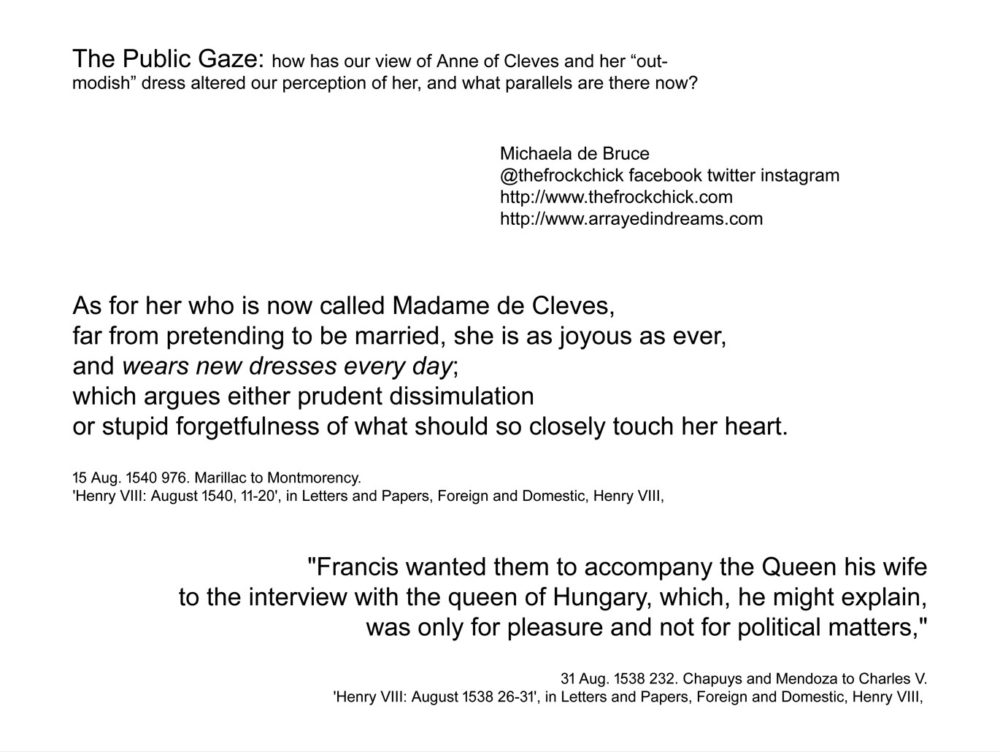
These two quotes really neatly capture exactly why I’m so fascinated with our perception of Anne. While we think of the transactional nature of these marriages we tend to forget that marriage brings overt and covert changes. The overt being introduction of new ideas and fashions, the covert is the ability to travel ostensibly to merely have a catch up while actually being able to discuss great matters without record of them.
Letters could be intercepted, the ability to meet in person was much safer.
But I do love the shock of Marillac at the total lack of shame Anne expressed. It is an attitude that I think has shaped perception to this day.
I’ve also finally managed to get quality copies of references I really need and oh boy. Yes. I remember why they were so difficult to start with.
So connection is a very apt title for this post. I’m using the connections of the courtiers around Anne for one.
It’s the anniversaries of the celebrations of the marriage of Anne of Cleves so I thought I’d share an update.
Each time I follow another seam of evidence I come back to the same answer. Each time I try to break that answer, I find several authors who can back it up even more vividly with records.
I’m bothered by the misinformation about Anne existing in the first place, I suspect I know why it exists, but also by why we seem to keep repeating it as if the misinformation is real. Over the far more interesting pieces we have.
This even affects the artwork. The St John’s portrait is not original. It’s just not. There is confusion in every element of clothing that the workshop of a North Rhine artist just would not misunderstand.
These four images help explain. The left is a portrait of Elisabeth Bellinghausen. The luminosity and depth of facial features are distinctive. Next is the Bernal/Rosenbach portrait of Anne. The similarity of care in shadows around and under her chin follows the same care.
Next is the St John’s copy. While there is an attempt to copy her features it’s in a very different style.
To the right is a portrait said to be of Anne Boleyn with her features a bit cold, and pulled back. The St John’s portrait is more related to this than anything from the Bruyn workshop. She looks like she belongs on a playing card because of the flatness of the painting. The attempt to create dimension results in very hard lines around the eyes especially.
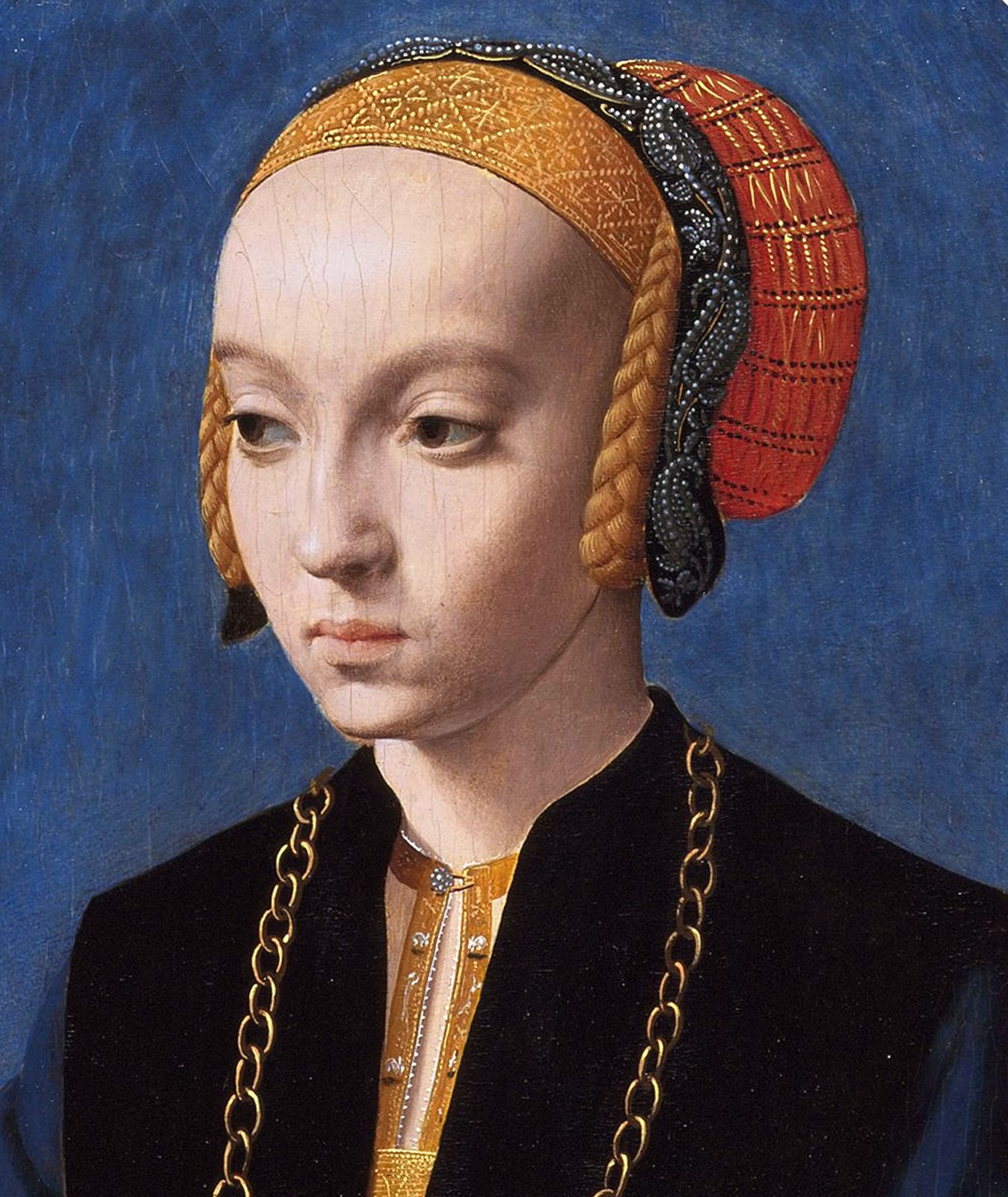
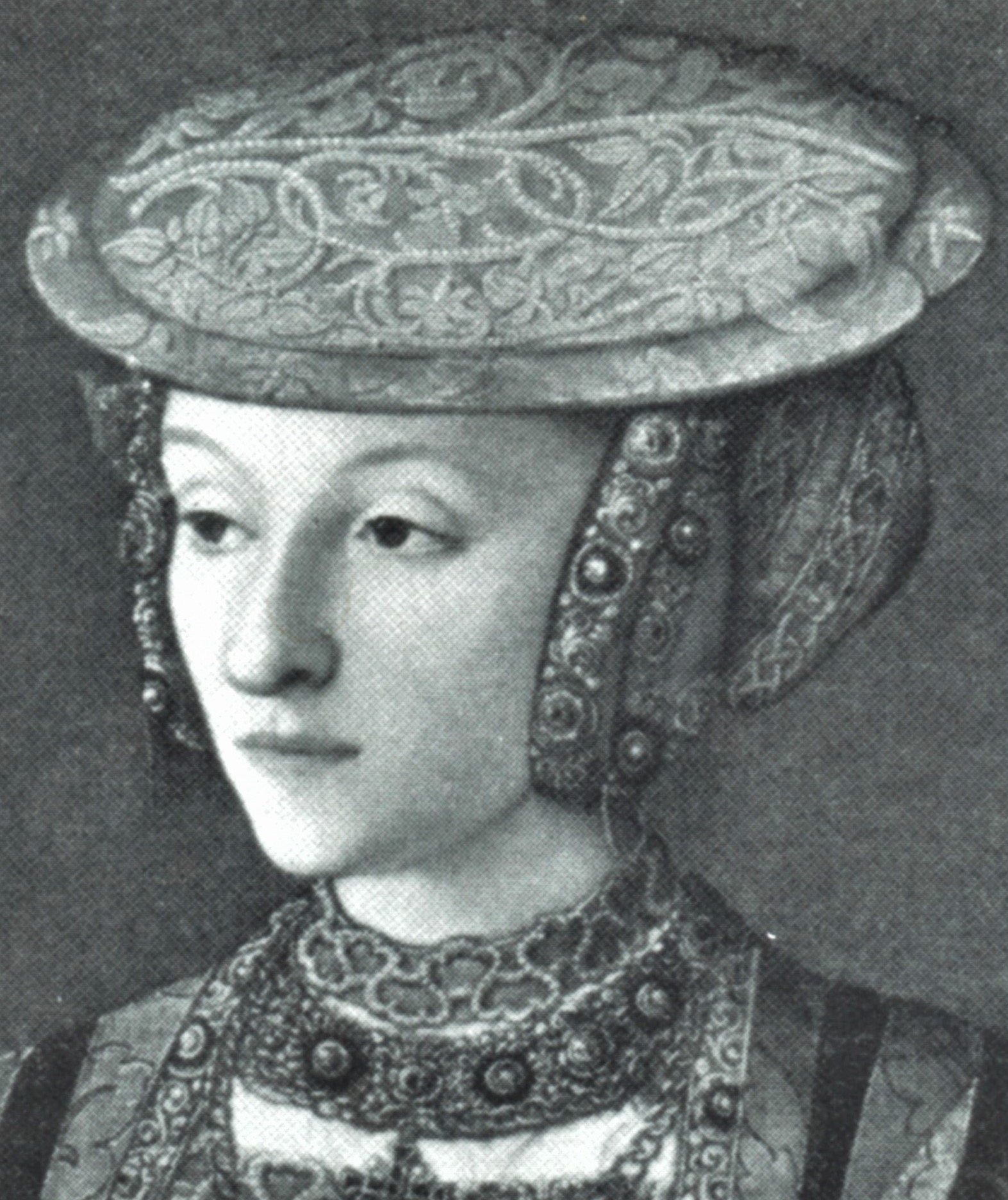
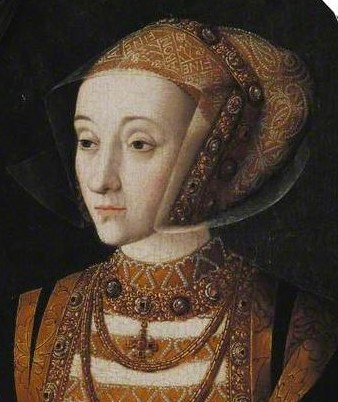
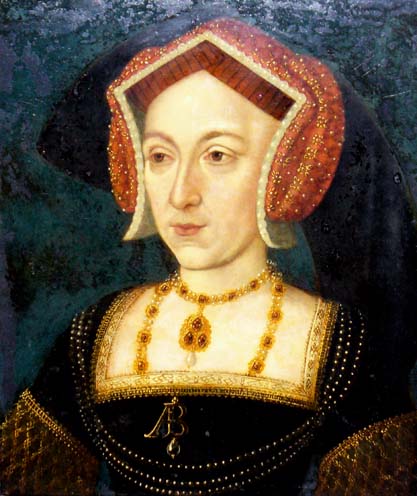
I suspect the Bernal/Rosenbach portrait was copied locally (the wood came from the Black Forest so I need to look into the trade in art supplies) and the artist tried to extrapolate what was going on under her <<benet/bonit.>> I suspect I might know why they didn’t just copy it, but that’s for a much more in depth chapter.
I also need to share the provenances of different portraits and that gets super weird. And results in some interesting takes in costume history books due to the incorrect attributions.
I was an a fast push for my second infusion today, which is shorter so not as much time to work on research, but I was writing up some notes, and realised I’ve absolutely got myself on the right track it’s kind of amazing. But it shouldn’t be!
But when you try to break your theory and find it just is better substantiated it’s then possible to trust yourself to keep going.
So that was nice 🙂
Today is a day many of us celebrate as part of tradition. Ours has changed a lot over the years and Mum and I both need to reduce the stresses that can come with preparing a fest with newer traditions. But it’s also a good time to ask what traditions to keep and what to discard.
Take how to lay out cutlery. It’s supposed to help us, but there are placement rules that mean left handed people are totally ignored. Then depending on where you live you are stuck with how many peas you can skewer with your fork or you can turn tines up and scoop the things.
If you are at a restaurant tradition says you wait for everyone, but I’ve been vegetarian most of my life and for some reason my food always arrived very early and would go cold before everyone else was served.
Eat that food as it’s presented because that’s what the chef put out and it’s supposed to be at perfect temperature when it arrives.
I learn rules so I know if they are based on safety, or about predictable results, or if why we do these have been forgotten over time.
My research into both Anne of Cleves and the various trades involved in producing her clothing and accessories, involves a lot of traditions and it’s really amazing how much is right there. I’m studying in a non traditional manner as well, yet also follows the path a heck of a lot of specialists have trod since antiquity. Many had to sneak into libraries but during my lifetime at least they have been so very open to all.
Investments of all kinds! But primarily how to dedicate time while every single project of mine has been on hiatus for so very long. I’ve just invested in, and been invested in, one of my yearly infusions of monoclonal antibodies. I can’t express how weird it is to just get these. They were still in the trial stages while I was at uni and I still have some of the references I used for my essay. Just.. it’s weird. Our senior lecturer was highly respected and you can find so much of his work in PubMed.
But I got to invest that time in hospital on transcribing the introduction paper to my Anne of Cleves research. I have already presented my earlier draft, but it’s now fuller and acts as an introduction to chapters based on each slide.
I may use my next infusion (it’s about 4hr) to work on some beading. I don’t have the backing I need for the pieces I’d really like to complete but I’ve also finally sorted the jewellery findings into Cleves first. There is a lot. But that’s how it should be.